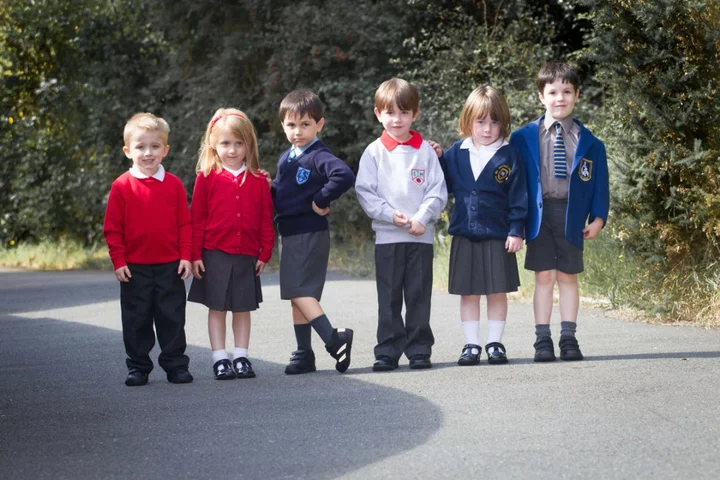Parents and carers of children in secondary school are still spending “exorbitant amounts” on school uniforms, a charity has said.
According to research conducted by The Children’s Society, which surveyed 2,000 parents across the UK in May, on average they are spending £422 per year on uniforms and £287 for primary school children.
The survey found that on average pupils were expected to have three branded items, with 29% of secondary school pupils expected to own up to five branded items including PE kits, and 13% expected to have at least seven.
So how exactly can parents and carers save money on school uniforms?
Buy secondhand
Sometimes there’s a means to buy secondhand uniforms at the school through the Parent Teacher Association, Matthew Easter, chairman of The Schoolwear Association, says.
But if this isn’t the case, he adds: “Parents should challenge schools and members of staff to provide better financial support to parents.”
Parents can even ask the school to reach an agreement with their recommended retail partner, to help them save money.
“Have a look on local Facebook sites or sometimes schools have secondhand sales themselves,” advises teacher, mother and money saving expert Sophie Bradbury. “Sometimes you can get uniform that’s barely been worn as someone’s grown out of it too quickly. If you know anyone with children in their older years, ask them. Chances are they’ve still got some old jumpers or polo shirts hanging around.
“Also check out your local charity shops and make sure to ask if they have any uniform out the back. Charity shops don’t put everything out straight away, so it’s always worth an ask. [You can also try] car boot sales. I always see old uniforms going for pennies.”
It’s great when siblings attend the same school too, because you can pass down their old items.
Buy good quality uniform that lasts
It’s tempting to buy cheap school uniforms, but for Easter suggests it’s better to focus on quality over quantity.
Easter is a parent of two girls aged seven and 10, and understands the strain it can put on families.
“School uniforms are unique pieces of clothing, because pupils wear it for at least 196 days every year. It hardly changes too and doesn’t get lost as much as parents think – it’s only a small proportion. So why not invest in quality branded clothing that will last your child for a few years?
“It means you can focus on purchasing the quality staple branded items, including a blazer, jumper – depending on the school – and tie from recommended retailers and then get skirts, trousers, white shirts, shoes and anything else required from independent retailers or supermarkets on the high street.”
In reality, Easter suggests parents end up spending more in a shorter space of time buying lower quality uniforms, because they might need to be replaced.
Buy it big so you get more out of it
Uniforms tend not to be a one-time cost: you’ll have to buy replacements whenever you child has a growth spurt and the garments no longer fit.
An easy hack to minimising the amount of new uniforms you have to buy? Buy the items a bit too big, giving your child time to grow into it.
Recycle or upcycle
Clothing is one of the world’s most polluting industries, so don’t throw your uniform away.
You can always donate them to organisations that upcycle and recycle school uniforms, such as the Re:Form scheme (run by Trutex), which sells pre-owned uniforms at reduced prices.
Or organisations like Pickni Uniforms, founded by Croydon rapper Jords and his friend Jamahl Rowl, which collaborates with schools, community organisations, and social service agencies to provide free school uniforms to students from low economic backgrounds.
Read MoreCharity boss speaks out over ‘traumatic’ encounter with royal aide
Ukraine war’s heaviest fight rages in east - follow live
King Charles and Queen Camilla surprise spa guests in bathrobes at eco-village
Nearly 1.5m 18 and under referred for mental health support in 2022 – charity
Holiday hygiene horrors: Summer health risks to avoid, from flying to hotels

